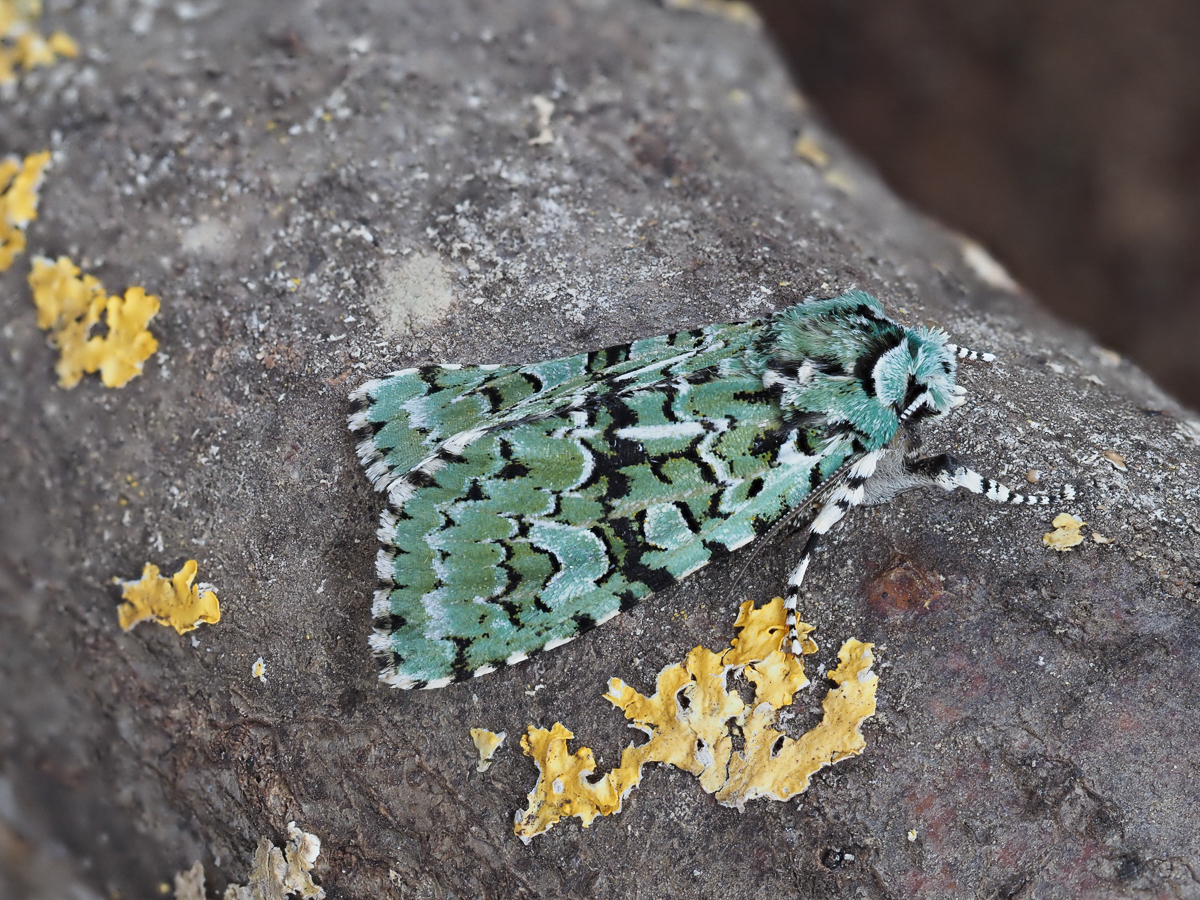
Photo © Andy Mitchell
Griposia aprilina, also known as the merveille du jour, is a moth of the family Noctuidae, found in Asia and Europe. The species was first described by the Swedish taxonomist, Carl Linnaeus in his 1758, 10th edition of Systema Naturae.
Forewing whitish green; lines and markings velvety black, the median shade especially thick; upper stigmata large; all the black markings emphasised by white; hindwing blackish grey; the cellspot, outer line, and submarginal shade darker; a white terminal space before the black marginal line; the ab. bouveti Lucas, from France, has the head, thorax, and forewings greener, the median area of forewing without black markings.
The moth flies in September and October and comes to light.
Laid singly or in small numbers on branches, or in crevices in the bark of oak trees (Quercus species).
The eggs hatch as the buds swell and the young larva bore into a bud which conceals them as they feed. They than feed on the flowers and grow rapidly and finally on the leaves. Larvae are greenish black, with a fulvous tinge; a dorsal series of dark medallions; dorsal line pale, interrupted, with black edges; spiracular line pale like the venter.
In a large, tough cocoon, near the soil surface and usually among the roots of an oak.
It ranges from Sardinia and south-east Russia (foothills of the Ural mountains to the Black Sea) from the southernmost part of Norway and Saint Petersburg through northern and central Europe to southern France and northern Italy, as well as in Castile. Also in western and central Anatolia and the Caucasus. Also in Asia minor. There is recent evidence from the Alborz mountain range.
Source: Wikipedia
The primary larval foodplant is Pedunculate Oak (Quercus robur).